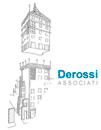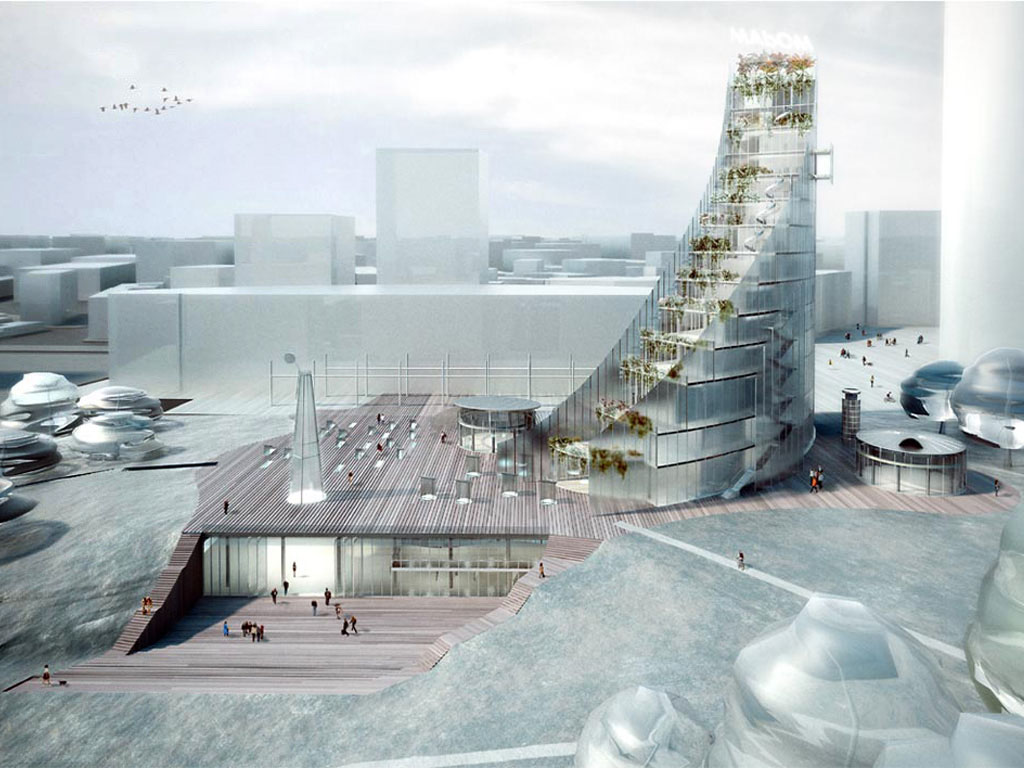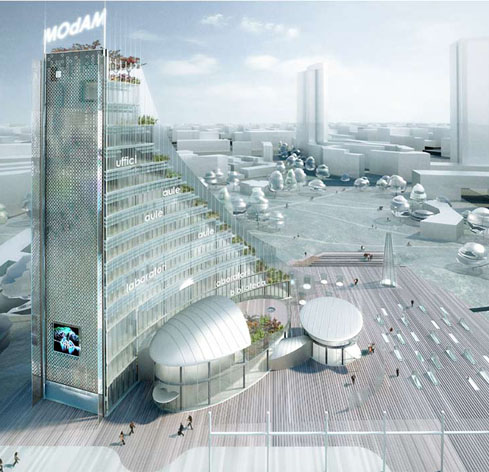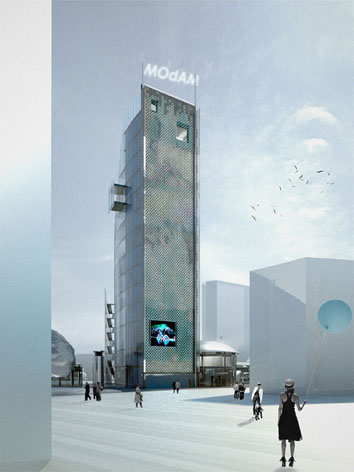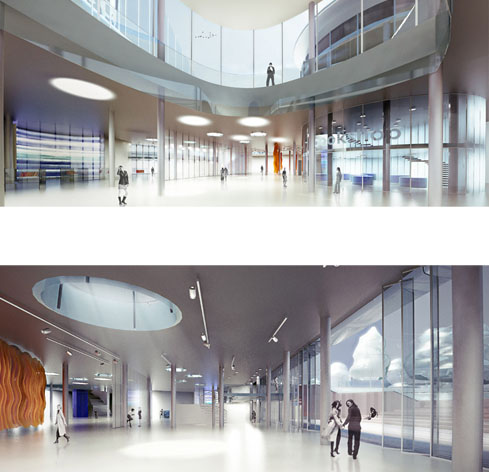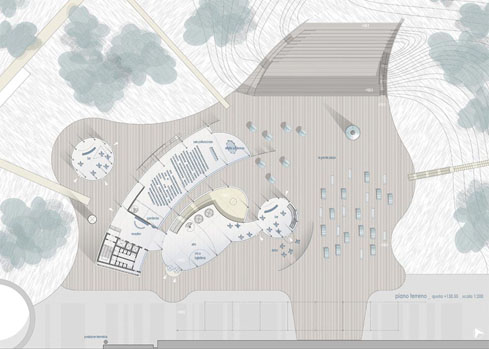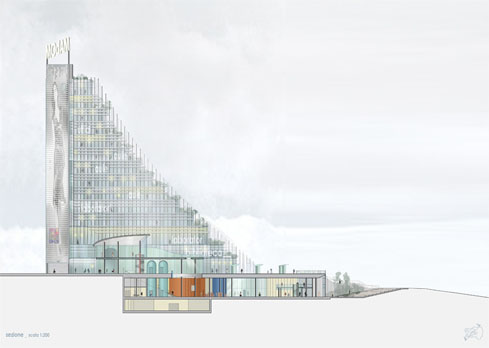MOdAM Museum and School of Fashion Milan
The project and the city.
The main urban relations the project tries to respond to, are synthetically three:
- The relationship with the large circular space of the podium, highlighted by the position of the school slightly curved and positioned to the side, to obtain direct visibility and at the same time degrade towards the park and Via Melchiorre. The relationship with the podium is made even more evident by the large communication screen that overlooks it.
- The relationship with the future exhibition building that would be located in front of the project area, is guaranteed by a new large square that offers a direct visual relationship between the park and the podium.
- The relationship with the “Biblioteca degli Alberi” park, would be obtained through the degradation of the green terraces of the school.
The grand square.
The main It seemed important not to obstruct the relationship between the future exhibition building and the park with an emerging building on the entire perimeter. Indeed, the new project had to take on the role of proposing an overall design that would guarantee a sequence between the exhibition building, the school, the museum, and the park. With this intention, it seemed appropriate to expand the street-square above the new building by creating a new grand square that, placing the exhibition building in continuity with the park, would become a central point in a symmetrical relationship with the center of the podium. The grand piazza will have the appearance of a “luminous landscape” capable of producing different lighting and chromatic effects during the day and night thanks to the special technologies used to create the “fireplaces of light”.
The museum.
Access to the museum is from the Atrium, which connects the school, the multipurpose room, and the bar directly. The atrium extends into the underground part at the level of the park, where all the musal activities are located (gallery, loft, studios, laboratories). The spaces of the gallery and the loft are located in continuity, in a large common area with the possibility of flexible compositions. The space of the loft is located in adherence to the park, from which it is divided by a large window that can be opened completely; can expand its activities outside, where a “natural theater” has been designed in the park. At the center of the loft, the is a large tower-skylight, also with ventilation and .
With a few variations, in addition to events and performances, it is possible to organize fashion shows in the loft that can also be extended outside. The gallery space offers great flexibility of use. The galleries are illuminated by a series of ceiling skylights that turn into “chandeliers” at night.
The school.
The school consists of a building with 14 floors above ground and 2 underground floors. Access to the school can be either from an independent entrance or from the atrium of the museum. On the ground floor, in addition to the main entrance, the is a multipurpose room with the related equipment. On the first floor is located the library that ends with a large terrace facing the park for reading outdoors. From the second to the thirteenth floor are the laboratories, classrooms, and offices, organized according to the various needs, with the possibility of variations and re-compositions. On the fourteenth floor, there is a hanging garden. The south wall is covered with a double glazed facade with a 60 cm gap for maintenance. On the external surface are inserted sequences of photovoltaic panels in glass plates which also have the function of brise-soleil. Large writings placed inside the window tell the distribution of internal activities.
The north-facing glazed wall is protected by simple glazing. The school cafeteria is been located outside the building in a small pavilion that can expand towards the outside of the park.
Project team
Derossi Associati (prof. Arch. Pietro Derossi, Arch. Paolo Derossi, Arch. Davide Derossi)
History and criticism: François Burkhardt
Fashion sociology: Gianpaolo Fabris
Design: Massimo Ruffilli
Structure : Edmondo Vitiello
Bioclimatics: Marco Sala
Consultants: Arup, Cristina De Marco, Dada Saligeri, Paola Maria Bobba, Paolo Mannelli
Year
2006
Status
Contest


